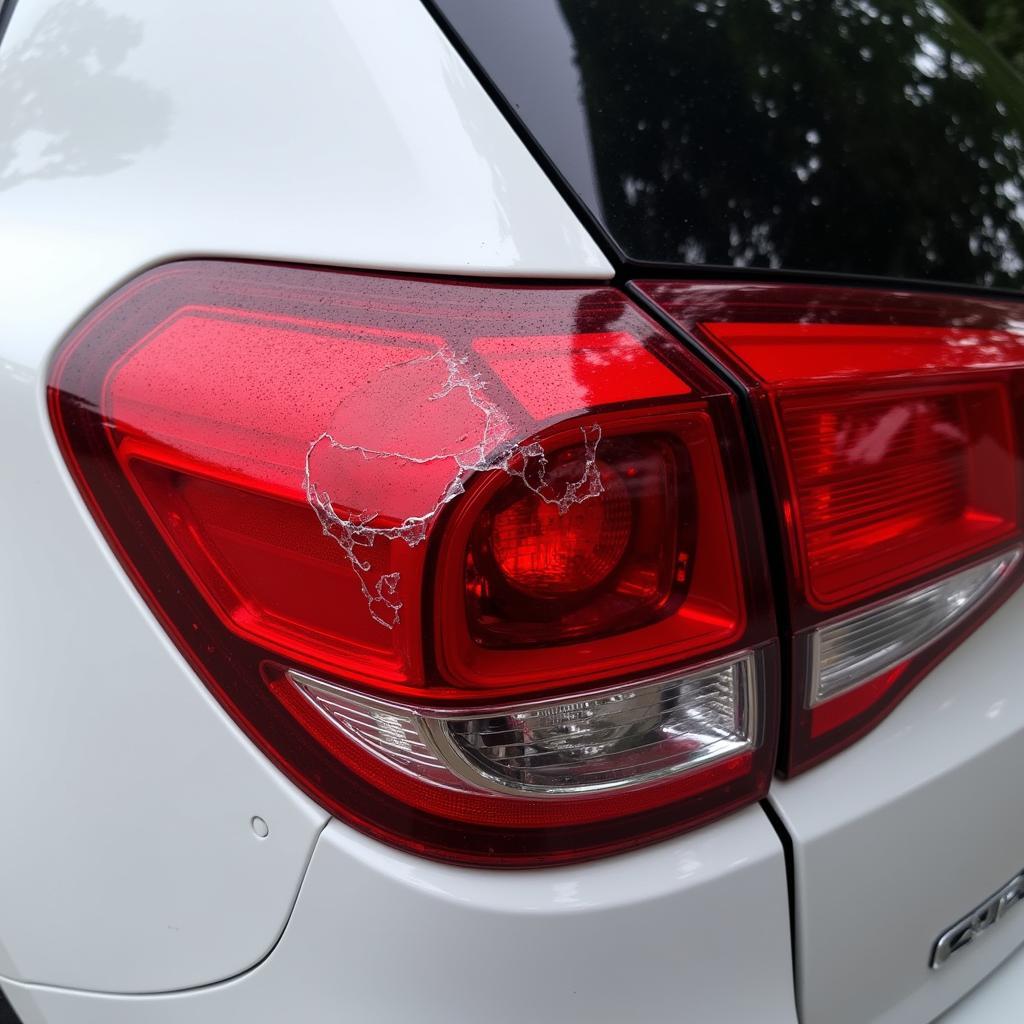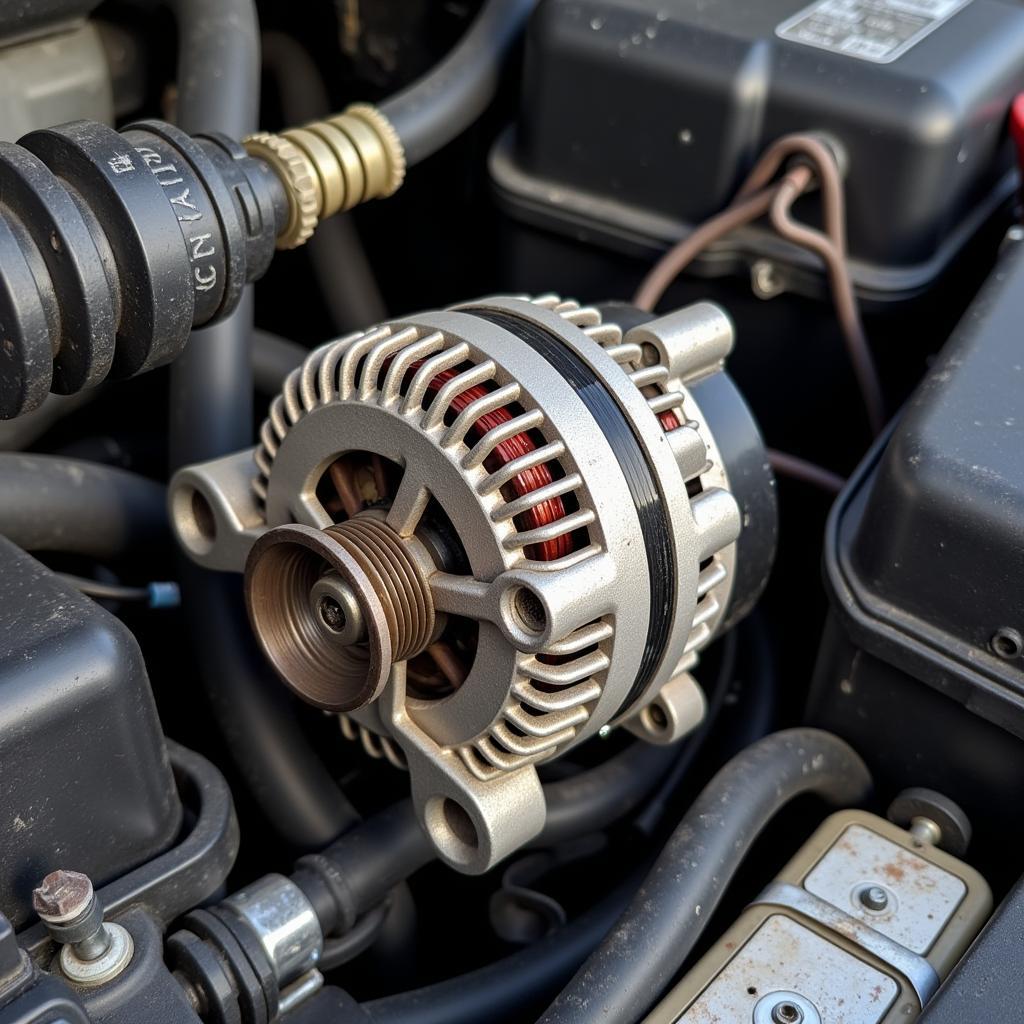Rust is a car owner’s worst nightmare. It’s unsightly, can compromise the structural integrity of your vehicle, and if left untreated, can lead to costly repairs. This guide will provide you with everything you need to know about Fixing A Rust Spot On A Car, from identifying the type of rust to choosing the right repair method.
Understanding Rust and Its Causes
Before tackling that rust spot, it’s crucial to understand what causes it. Rust is essentially iron oxide, formed when iron or steel is exposed to oxygen and moisture. This chemical reaction corrodes the metal, leading to the characteristic reddish-brown flakes and pitting we associate with rust. Factors like road salt, humidity, and even minor scratches that expose bare metal can accelerate the rusting process.
There are several types of rust, ranging from surface rust, which is relatively easy to fix, to penetrating rust, which requires more extensive repair. Identifying the type of rust you’re dealing with is the first step in choosing the right fix. Surface rust appears as small, discolored spots and doesn’t significantly affect the metal’s integrity. Penetrating rust, however, has eaten deeper into the metal, creating holes or weakening the structure. fixing rust spots on cars
Assessing the Damage: Surface Rust vs. Penetrating Rust
Is it just a little discoloration or something more serious? Knowing how to differentiate between surface rust and penetrating rust is key. Run your hand over the rust spot. If it feels rough and flaky, it’s likely surface rust. If, however, you feel a hole or the metal feels significantly weaker in that area, it’s probably penetrating rust.
Fixing Surface Rust: A Step-by-Step Guide
Fixing a small rust spot on my car that’s just surface rust is a manageable DIY project. Here’s a breakdown of the steps involved:
- Clean the Area: Wash the area with soap and water, then dry thoroughly.
- Remove the Rust: Use sandpaper, a wire brush, or a rust remover product to eliminate the rust.
- Prime the Area: Apply a rust-inhibiting primer to protect the bare metal.
- Paint and Seal: Apply touch-up paint that matches your car’s color, then seal with a clear coat.
Tackling Penetrating Rust: When to Call a Professional
Fixing penetrating rust is significantly more complex and often requires professional help. It may involve welding in new metal patches, using fiberglass fillers, or even replacing entire panels. fixing a rust spot on car If you’re not comfortable with these procedures, it’s best to consult a professional auto body repair shop.
Preventing Rust: Protecting Your Car’s Finish
Prevention is always the best medicine. Regularly washing your car, waxing it to protect the paint, and addressing minor scratches promptly can prevent rust from forming in the first place. fixing small surface rust spots on cars Also, consider undercoating your car, especially if you live in an area with harsh winters and road salt.
“Preventing rust is much easier and cheaper than fixing it. Regular maintenance is key,” says John Smith, an Automotive Engineer at Smith Auto Solutions.
Conclusion
Fixing a rust spot on a car is essential for preserving your vehicle’s appearance and structural integrity. By understanding the cause, type, and appropriate repair method for your rust problem, you can keep your car looking its best and prevent further damage. For more assistance, connect with AutoTipPro at +1 (641) 206-8880 or visit our office at 500 N St Mary’s St, San Antonio, TX 78205, United States. fixing rust spots on car roof
“Addressing rust early on can save you a lot of money and headaches down the road,” adds Sarah Jones, Lead Mechanic at Jones Auto Repair.






Leave a Reply